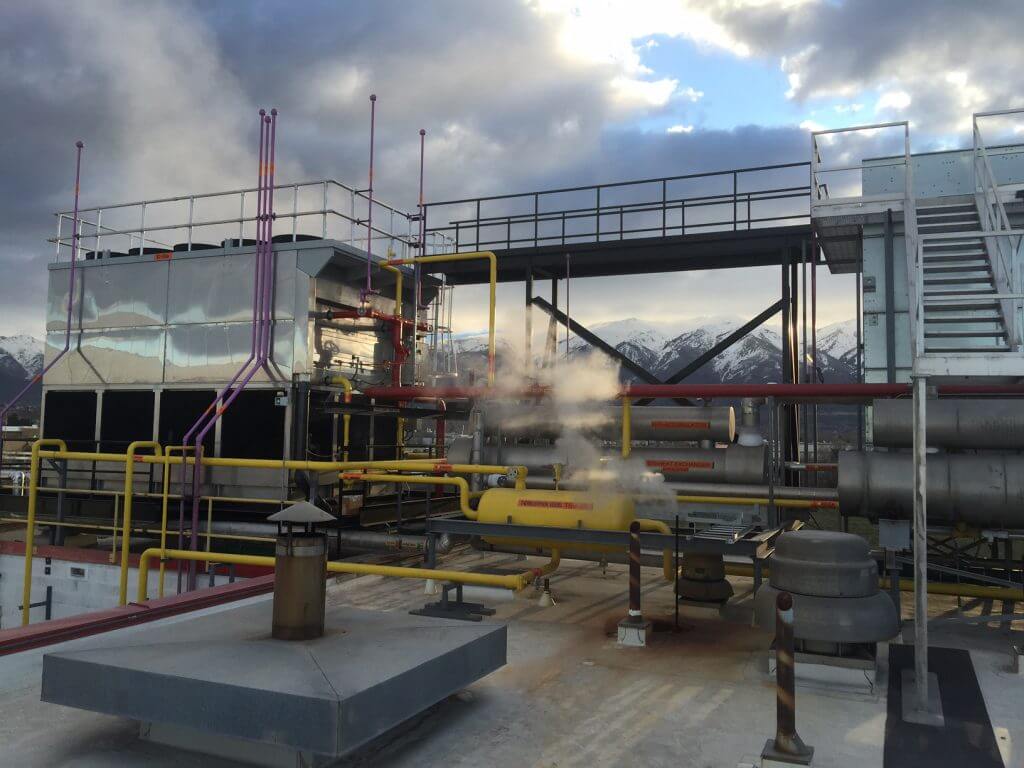AutomationDirect industrialized open-source hardware and software provides flexibility and options for OEMs looking to deliver tough, IT-capable systems.

Güntner is a worldwide original equipment manufacturer (OEM) of evaporative condensers, serving a wide range of industries and users with their reliable large-scale heat exchangers. The company has developed in-house embedded microcontrollers specifically optimized for their equipment.
When the need arose in the North America and Latin America regions to quickly add new functionality to the equipment, the design team realized that using commercial off-the-shelf (COTS) programmable logic controllers (PLCs) could speed up the design process.
Zachary Wernlund, the Smart Solutions Manager for Güntner’s North and Latin America markets, wrote a case study article published by Process Instrumentation in January 2021 titled Open Controller Speeds Time to Market, explaining why the AutomationDirect ProductivityOpen automation controller was the ideal platform for quickly adding functionality to proven systems.
Innovative Performance
The basic function of any heat exchanger, whether it is passive or highly automated, is to transfer heat between two different media, such as liquid and air. Güntner has always maintained a focus on driving economic and environmental efficiencies with their equipment. Company innovations have included features like Güntner motor management and hydro management controls for reducing power and water consumption respectively, along with other technologies to improve reliability.
Conductivity Control
Because cooling system water builds up contaminants, users must add treatment chemicals and periodically apply freshwater purges, but both of these actions can be costly if overdone. Güntner wanted to help their customers run efficiently by adding a conductivity sensor, valve, and control loop solution that could automatically initiate purges as needed, while providing monitoring data.

IT Built for OT
To speed up the design and rollout time, the team investigated commercial PLC platforms. During their research, they discovered the newly available AutomationDirect ProductivityOpen controller. The ProductivityOpen is industrially built for operational technology (OT) environments, like standard PLCs or Güntner’s in-house controllers. ProductivityOpen is economical, connects with readily available AutomationDirect I/O modules offering all the necessary signal types, and comes with UL and CE approvals.
What really drew the team to ProductivityOpen is its use of an Arduino-compatible CPU, making it an open software-configurable controller. The Arduino heritage means users can connect standard or industrially-hardened ‘shields’ to expand networking, wireless, and other options—making the controller very IT-friendly.
Open Options
Programming flexibility was a key factor in choosing Productivity open for this equipment enhancement.
Because the controller is Arduino-based, developers can use open-source programming techniques and a variety of languages. They are not constrained to the specific languages and features offered by a PLC-based platform, so users are free to create solutions to meet any need.

The team already had open-source experience, and was therefore immediately able to apply their familiarity with C++ and access online developer communities to obtain free code snippets.
ProductivityOpen also supports standard Arduino ‘sketches’ for programming, and it is supplied with a graphical ProductivityBlocks programming interface, simplifying many tasks.
Future Flexibility
Güntner developers were able to start quickly and freely take advantage of AutomationDirect support as needed. They developed the control logic and a USB-based interface for field technician use, and have found significant customer interest. The result is a platform in place for future developments like retrievable data logging, remote monitoring, and IoT connectivity. AutomationDirect ProductivityOpen is an example of how industrialized open source can provide unique flexibility for OEMs to add functionality and IoT capabilities to their equipment.
All figures courtesy of Güntner

